Understanding the Evolution of the Image of Women in Vietnamese Silk Paintings
Abstract
1. Introduction
2. Literature Review
3. Results
3.1. Thematic and Stylistic Development Across Periods
3.1.1. Traditional Period (1925–1954)
3.1.2. Modern Period (1955–1986)
3.1.3. Contemporary Period (1986–Present)
3.2. Cultural and Societal Influences on Artistic Expression
3.3. Innovations in Techniques and Materials
4. Discussion
4.1. The Evolution of Women’s Imagery in Silk Painting Across Periods
4.2. The Impact of Cultural and Social Factors on Silk Painting
4.3. Innovations in Techniques and Materials in Silk Painting
5. Methodology
5.1. Data Collection
- (1)
- Artistic Work Selection and Analysis Framework
- (2)
- Expert Interviews
5.2. Data Analysis
- (1)
- Content Analysis
- (2)
- Qualitative Analysis
6. Conclusions
Funding
Data Availability Statement
Conflicts of Interest
References
- An, Đặng Thi Thu. 2018. Hình tượng người phụ nữ trong tranh lụa của Nguyễn Phan Chánh vận dụng vào daỵ học môn Mỹ thuật ở trường tiểu học thực nghiệm. Master’ thesis, Đại học sư phạm nghệ thuật trung ương, Hanoi, Vietnam. Available online: https://luanvan.net.vn/luan-van/luan-van-hinh-tuong-nguoi-phu-nu-trong-tranh-lua-cua-nguyen-phan-chanh-van-dung-vao-day-mon-mi-thuat-o-truong-tieu-hoc-81722/ (accessed on 1 November 2025).
- Anh, Trần Đỗ Diệp. 2006. Nguyễn Phan Chánh-Người xây nền cho tranh lụa Việt Nam. Available online: https://thantrinhomhue.com/2024/03/15/nguyen-phan-chanh-nguoi-xay-nen-cho-tranh-lua-viet-nam/ (accessed on 1 November 2025).
- Corey, Pamela. 2015. The Artist in the City: Contemporary Art as Urban Intervention in Ho Chi Minh City, Vietnam, and Phnom Penh, Cambodia. Available online: https://hdl.handle.net/1813/41150 (accessed on 1 November 2025).
- Duc, Hoang Minh. 2014. Tranh lụa Việt Nam từ chất liệu đến kỹ thuật. Tạp chí Văn hóa Nghệ thuật 362: 78–81. Available online: http://vanhoanghethuat.vn/tranh-lua-viet-nam-tu-chat-lieu-den-ky-thuat.htm (accessed on 1 November 2025).
- Duc, Le Hoai. 2023. Tranh Lụa Việt Nam. Tạp chí Khoa học—Trường Đại học Hải Phòng: Giáo dục—Xã hội—Nhân văn. Số 57 (04-2023). Available online: https://vjol.info.vn/index.php/dhhp/article/view/78035 (accessed on 1 November 2025).
- Đức, Hoang Minh. 2022. Tranh lụa hiện đại việt nam giai đoạn mở đầu và thành tựu. Tạp chí Khoa học Trường Đại học Mở Hà Nội. số 89 (3–2022). Available online: https://vjol.info.vn/index.php/jshou/article/view/68724 (accessed on 1 November 2025).
- Hà, Thái Hà. 2019. 90 năm tranh lụa Việt Nam—Kỳ 1: Mấy chú giải về lịch sử. Tạp chí Mỹ thuật—Hội Mỹ thuật Việt Nam 42–47. Available online: https://tapchimythuat.vn/90-nam-tranh-lua-viet-nam-may-chu-giai-ve-lich-su-ky-ii-cac-thoi-ky-va-cac-hoa-si/ (accessed on 1 November 2025).
- Hạnh, Cao Minh Hồng. 2019. Sự kế thừa yếu tố hồn nhiên dân gian trong mỹ thuật tạo hình việt nam hiện đại (từ năm 1945 đến năm 1975). Tạp chí Giáo Dục Nghệ Thuật (31-2019). Available online: https://vjol.info.vn/index.php/tcgiaoducnghethuat/article/download/80186/68254/ (accessed on 1 November 2025).
- Hiên, Đỗ Thị Kim. 2023. Phong cách và xu hướng sử dụng hoa văn truyền thống trong thiết kế áo dài. Tạp chí Khoa học Trường Đại học Mở Hà Nội. số 99. Available online: https://vjol.info.vn/index.php/jshou/article/view/86391 (accessed on 1 November 2025).
- Học, Vương Lê Mỹ. 2023. Giá trị nghệ thuật từ các tác phẩm tranh lụa của Bảo tàng Mỹ thuật Việt Nam. Tạp chí văn hoá nghệ thuật 524: 2023. Available online: http://vanhoanghethuat.vn/gia-tri-nghe-thuat-tu-cac-tac-pham-tranh-lua-cua-bao-tang-m-thuat-viet-nam.htm (accessed on 1 November 2025).
- Huynh, Boi Tran. 2018. Vietnamese Aesthetics from 1925 Onwards. Available online: https://www.scirp.org/reference/referencespapers?referenceid=3487106 (accessed on 1 November 2025).
- Hương, Bùi Như, and Phạm Trung. 2013. Nghệ thuật đương đại Việt Nam 1990–2010, Nhà xuất bản tri thức. Hanoi: Nhà xuất bản tri thức. [Google Scholar]
- Khánh, Đinh Thị Vân. 2014. Hình tượng người phụ nữ trong tranh lụa của Nguyễn Phan Chánh và Nguyễn Thụ. Master’s thesis, Đại học Mỹ Thuật Hà Nội, Hanoi, Vietnam. [Google Scholar]
- Lenzi, Iola. 2022. Early contemporary art in Vietnam: Đổi Mới shift as spur of innovation in globalizing 1990s-Hanoi. The Russian Journal of Vietnamese Studies 6: 73–85. [Google Scholar] [CrossRef]
- MacLean, Ken. 2008. The rehabilitation of an uncomfortable past: Everyday life in Vietnam during the subsidy period (1975–1986). History and Anthropology 19: 281–303. [Google Scholar] [CrossRef]
- Nếp, Nguyễn Thị. 2013. Phát huy nét độc đáo của tranh lụa Việt Nam trong giai đoạn hiện nay. Master’s thesis, Đại học Mỹ Thuật Tp Hồ Chí Minh, Ho Chi Minh City, Vietnam. [Google Scholar]
- Ngân, Nguyễn Thị Kim. 2022. Hình tượng áo dài trong hội họa Việt Nam. Tạp chí Khoa học Đại học Đồng Tháp 11: 115–20. [Google Scholar] [CrossRef]
- Nualart, Cristina. 2018. Contemporary feminist art in Vietnam: The visual emergence of agency. Irish Journal of Asian Studies 4: 22–38. Available online: https://irishjournalofasianstudies.wordpress.com/wp-content/uploads/2018/12/IJAS4_Nualart-1.pdf (accessed on 1 November 2025).
- Pham, Chi Phương. 2023. Writing nationalism in post-reform Vietnam: Portrayals of national enemies in contemporary Vietnamese fiction. In The Routledge Handbook of Nationalism in East and Southeast Asia. London: Routledge, pp. 416–28. [Google Scholar]
- Quân, Nguyễn. 2005. Con mắt nhìn cái đẹp. Hanoi: Nhà xuất bản Mỹ Thuật. [Google Scholar]
- Safford, Lisa Bixenstine. 2015. Art at the Crossroads: Lacquer Painting in French Vietnam. The Journal of Transcultural Studies 6: 126–70. [Google Scholar] [CrossRef]
- Schwenkel, Christina L. 2004. Iconographies of War: The Transnational Politics of Memory and Visuality in Contemporary Vietnam, University of California, Irvine. Available online: https://www.proquest.com/openview/3a5f17a66c812537db93c76fe72f11a2/1?pq-origsite=gscholar&cbl=18750&diss=y (accessed on 1 November 2025).
- Smith, Terry. 2019. Art to come: Histories of Contemporary Art. Durham: Duke University Press. [Google Scholar]
- Taylor, Nora A., and Pamela N. Corey. 2019. Đổi Mới and the globalization of Vietnamese art. Journal of Vietnamese Studies 14: 1–34. [Google Scholar] [CrossRef]
- Thuấn, Nguyễn Thị Bích. 2019. Kỹ thuật vẽ tranh lụa, ứng dụng của kỹ thuật vẽ trên nền lụa ẩm và vẽ trên nền lụa khô trong tranh lụa của sinh viên mỹ thuật trường đại học đồng tháp. Tạp chí thiết bị giáo dục 2: 197. [Google Scholar]
- Tran, Thi Lam Dien. 2022. People of Hà Nội in the Bao Cấp Era: Everyday Life Under Vietnamese Socialist Rule, 1954–1986. Ottawa: Université d’Ottawa/University of Ottawa. Available online: https://ruor.uottawa.ca/server/api/core/bitstreams/e7f78f6e-35b6-493a-a1fc-cb5bc24493e5/content (accessed on 1 November 2025).
- Were, Graeme. 2022. Museums, Collections and Social Repair in Vietnam. London: Routledge. [Google Scholar]
- Yến, H. 1992. Những giá trị, đóng góp đối với việc nghiên cứu và sáng tác tranh lụa hiện nay—Những giá trị, đóng góp đối với việc nghiên cứu và sáng tác tranh lụa hiện nay. Nghiên cứu văn hoá nghệ thuậ. [Google Scholar]

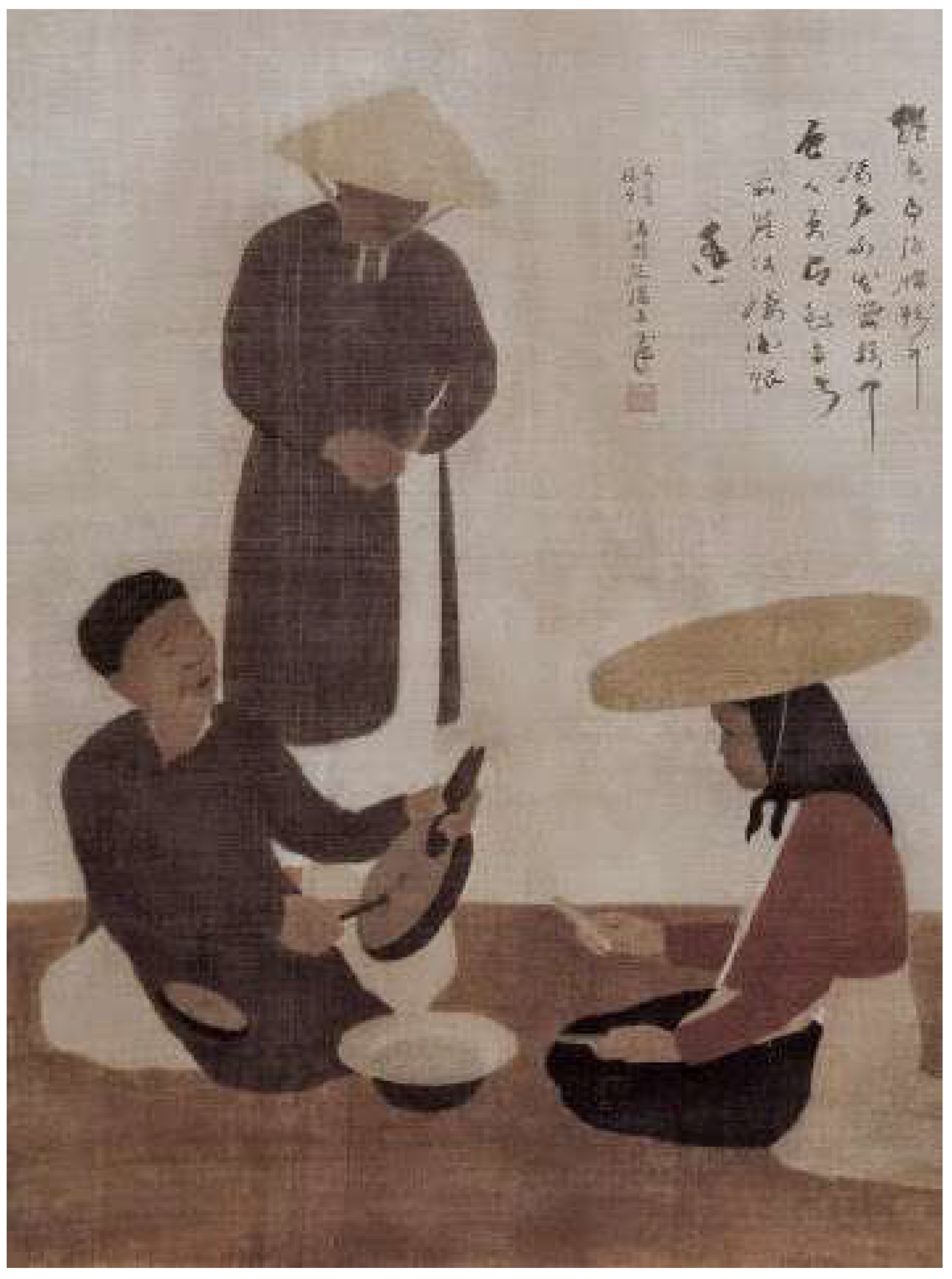
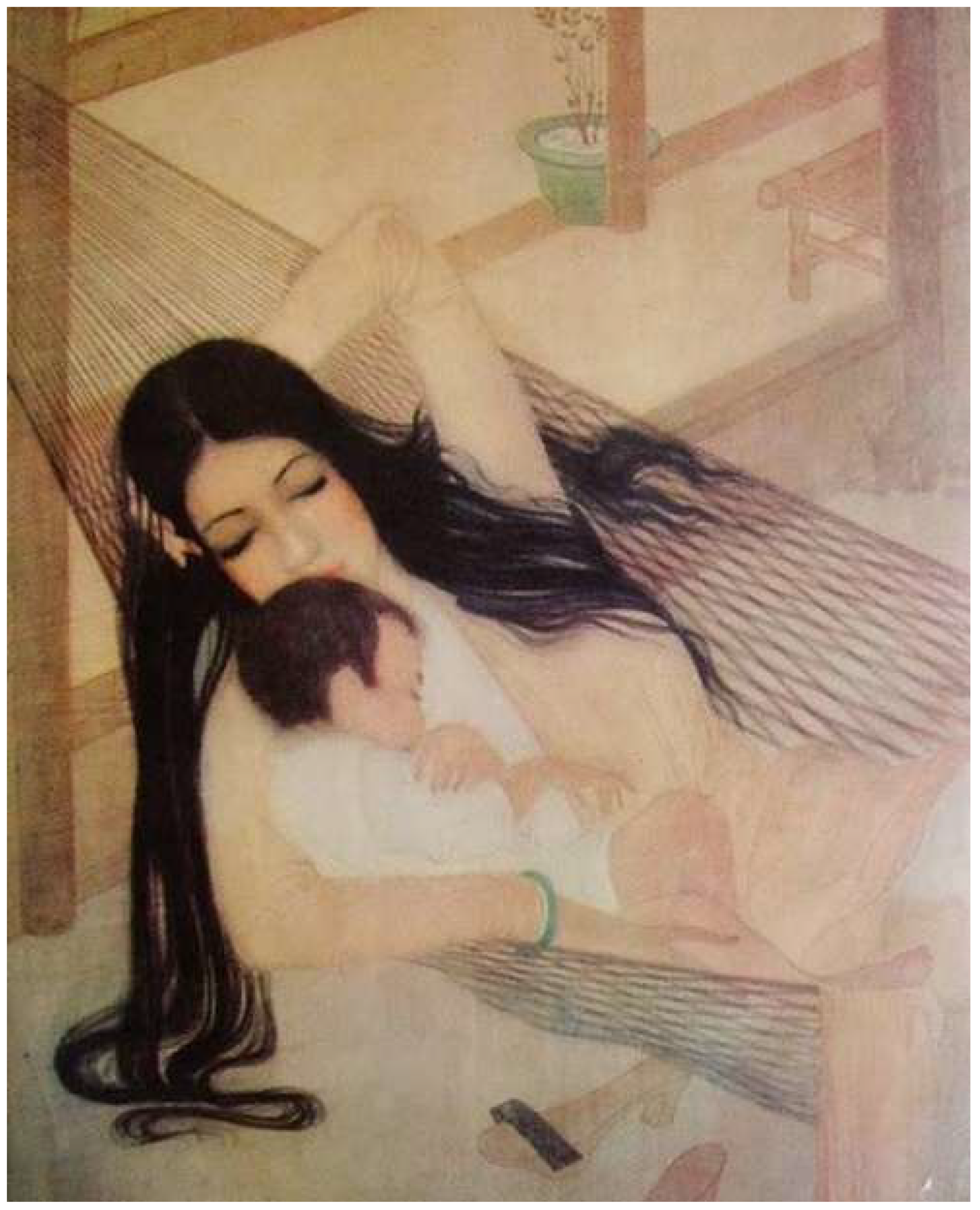

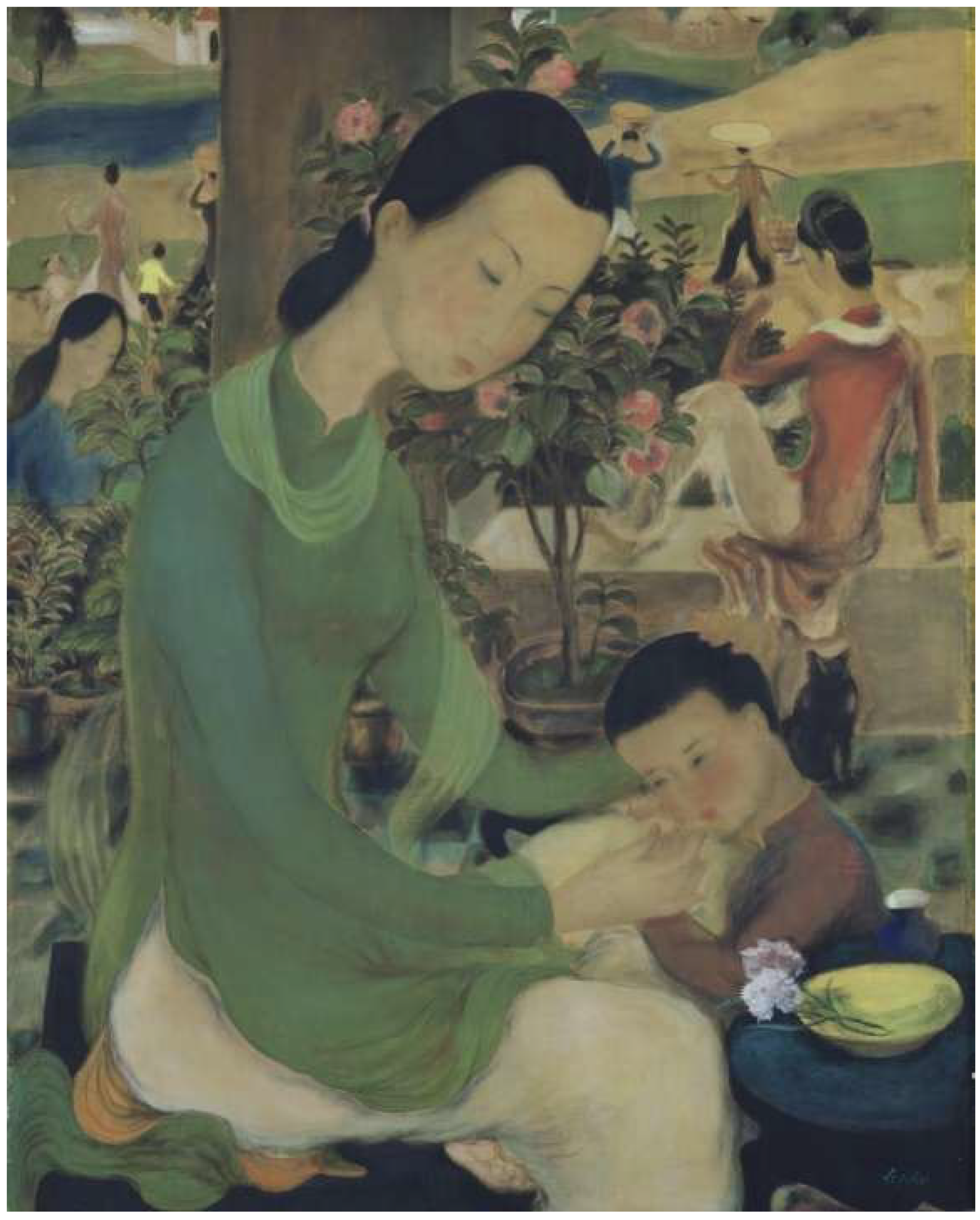
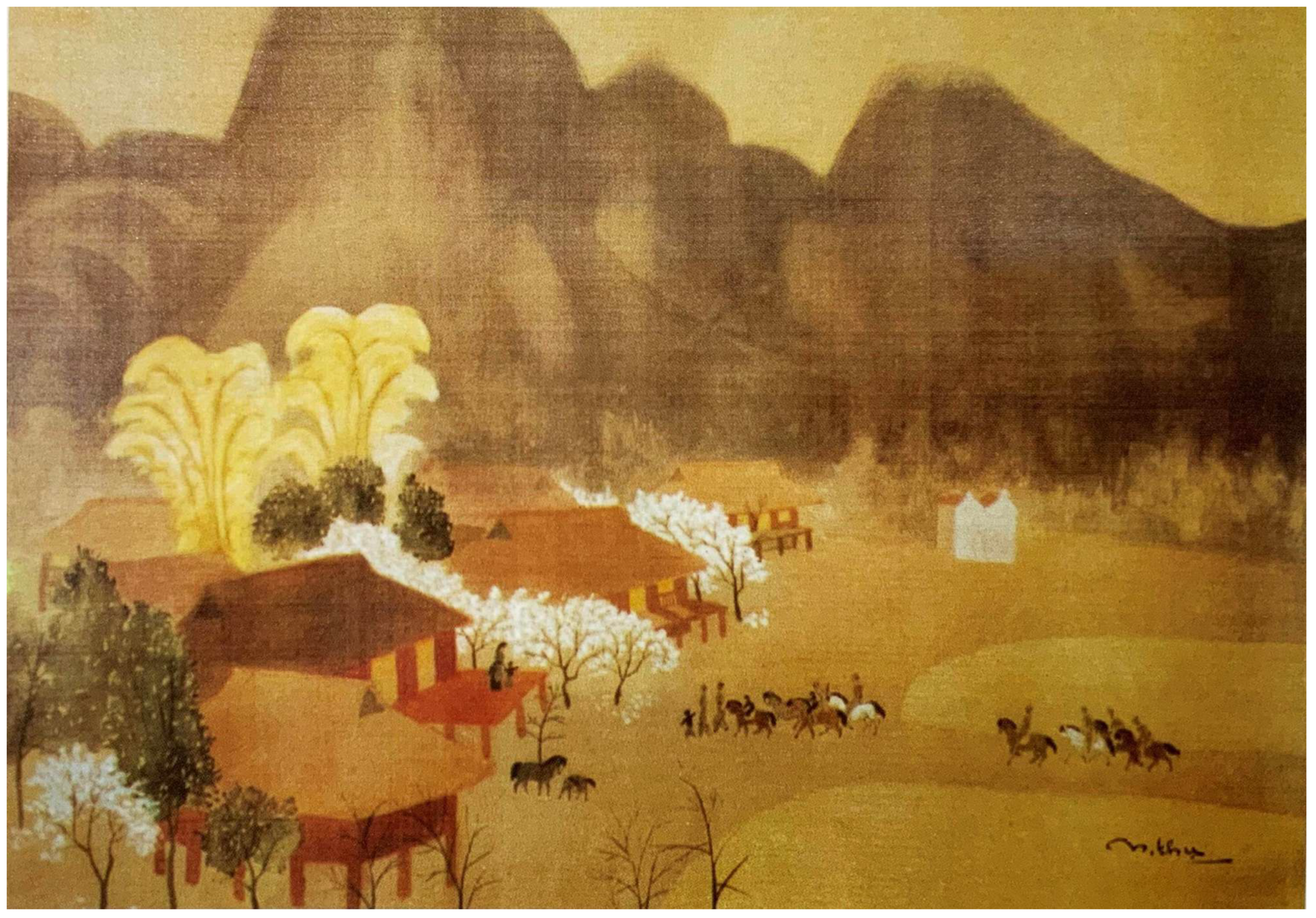
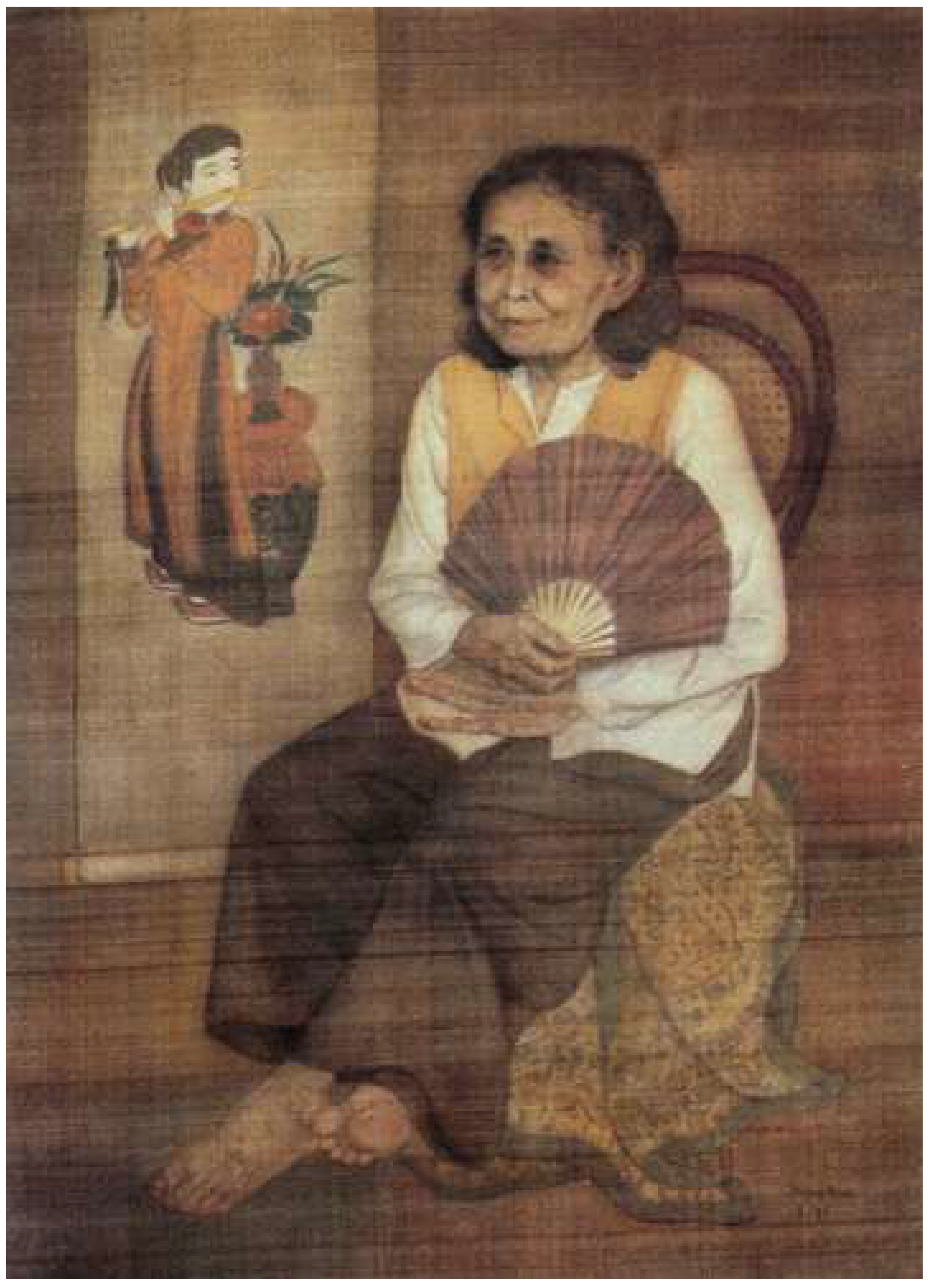
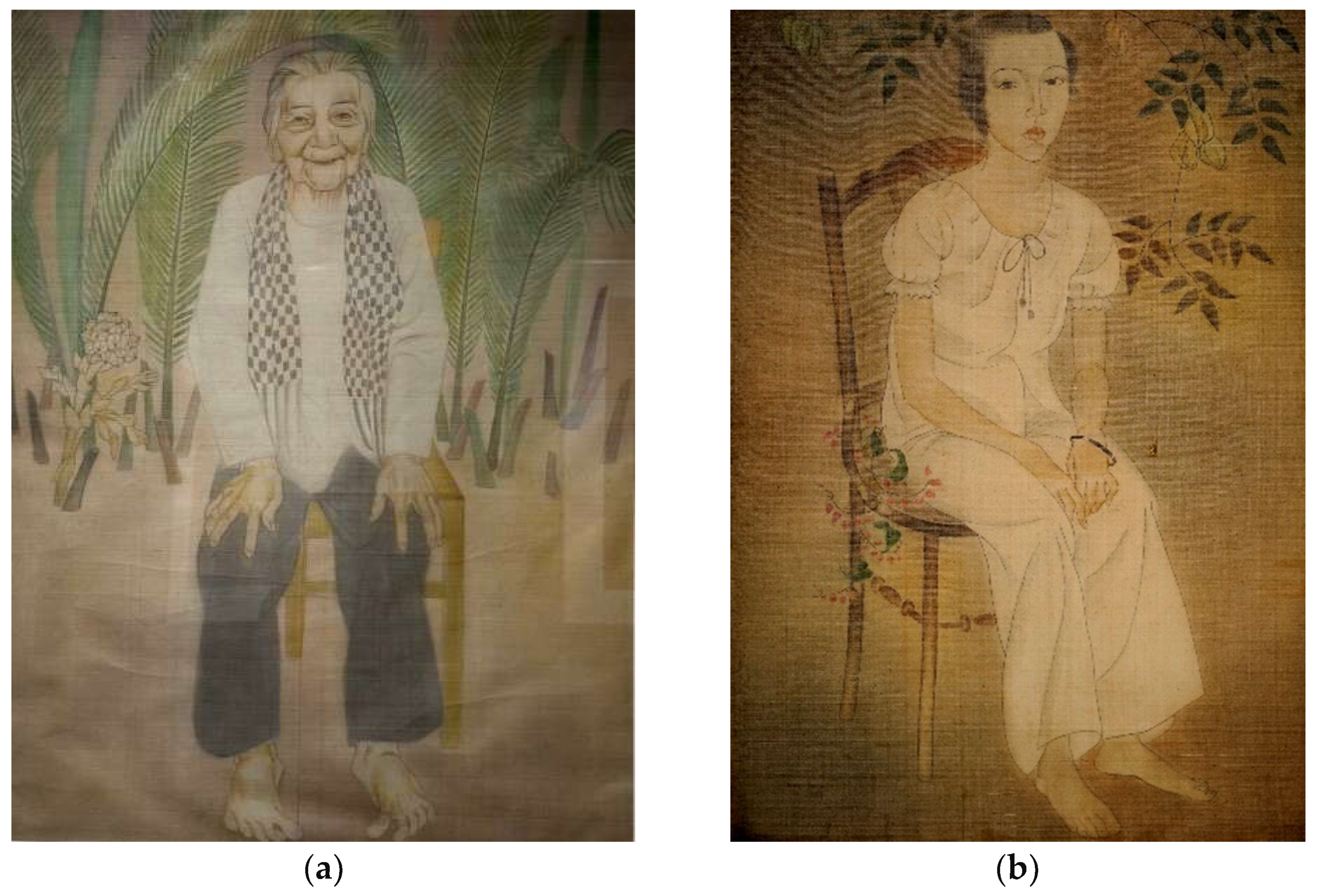
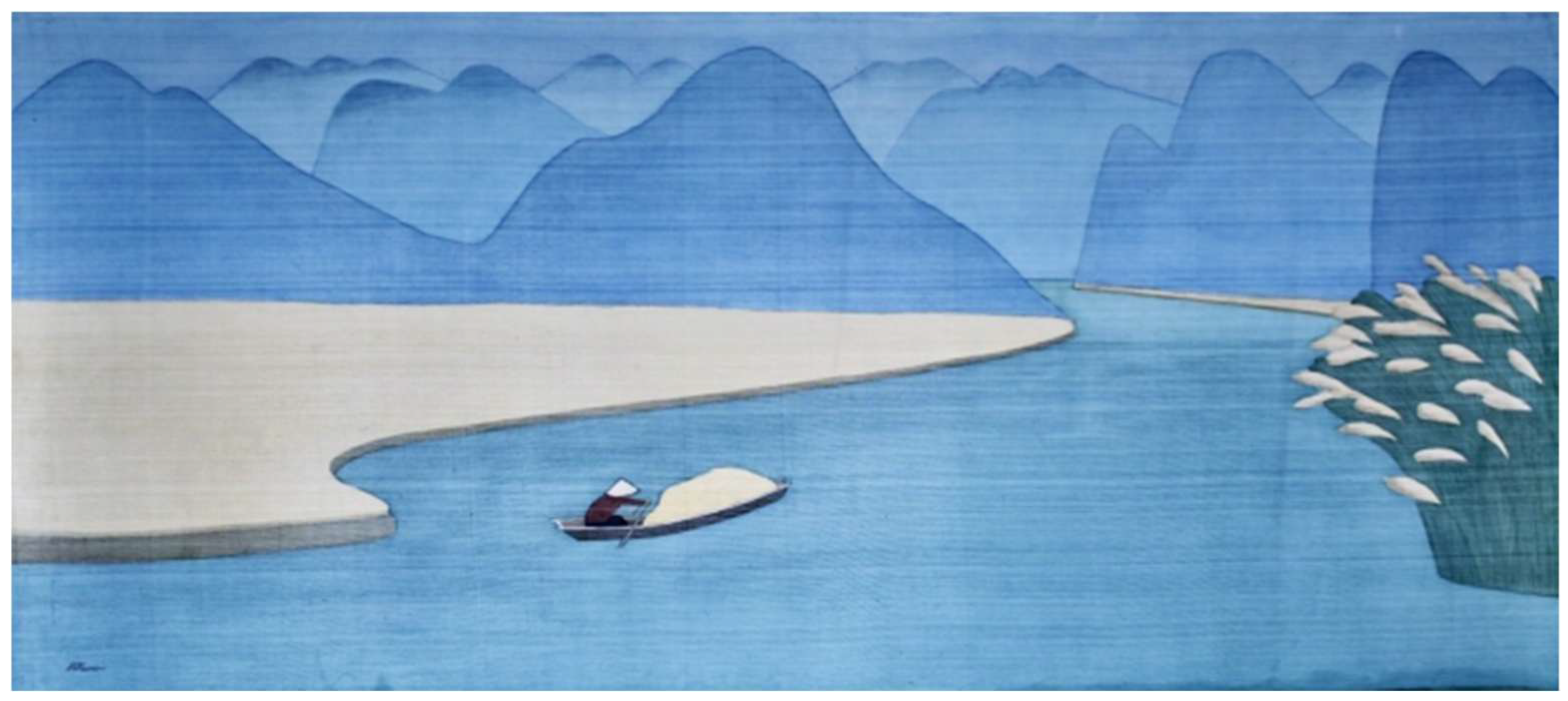


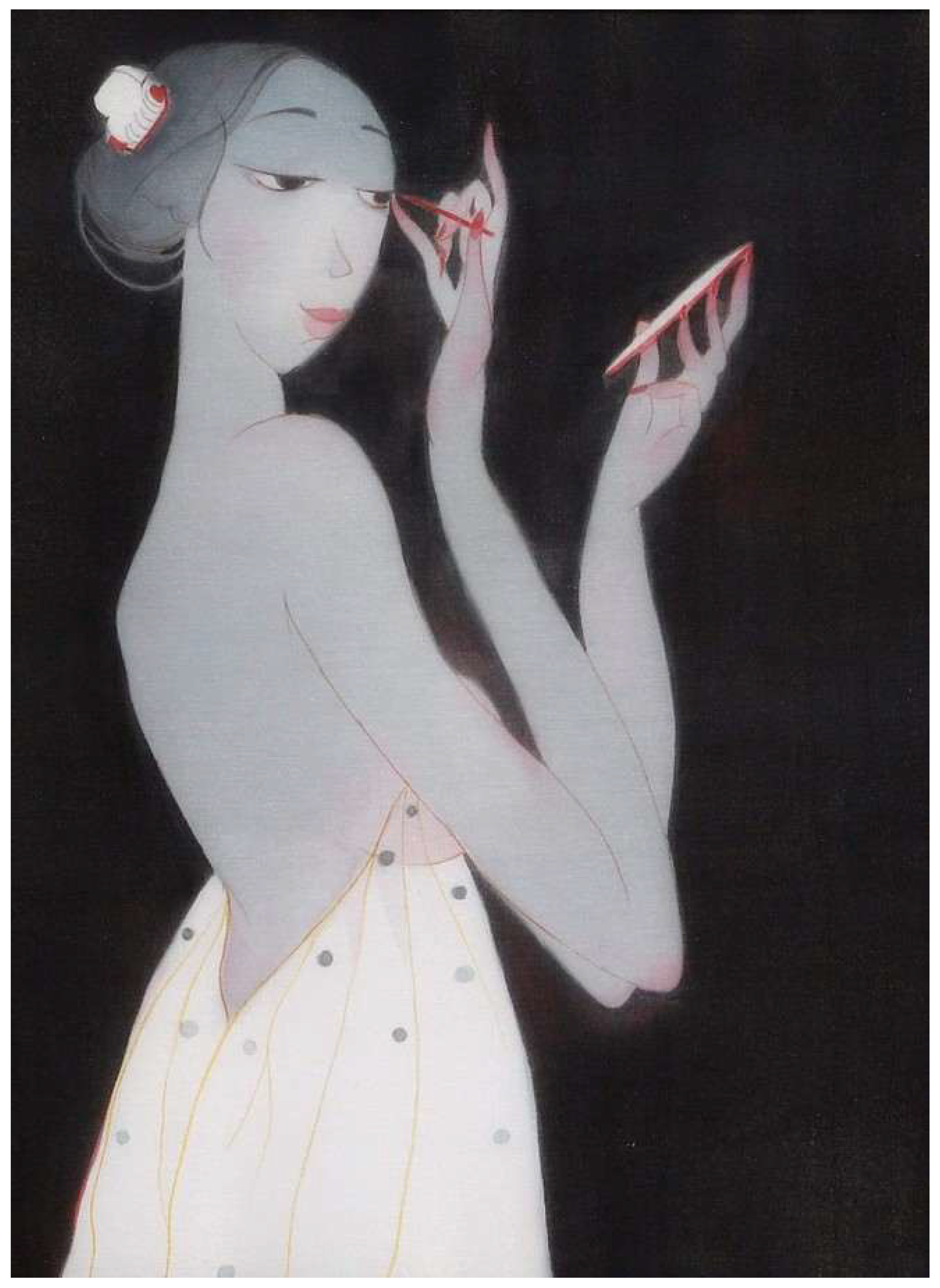

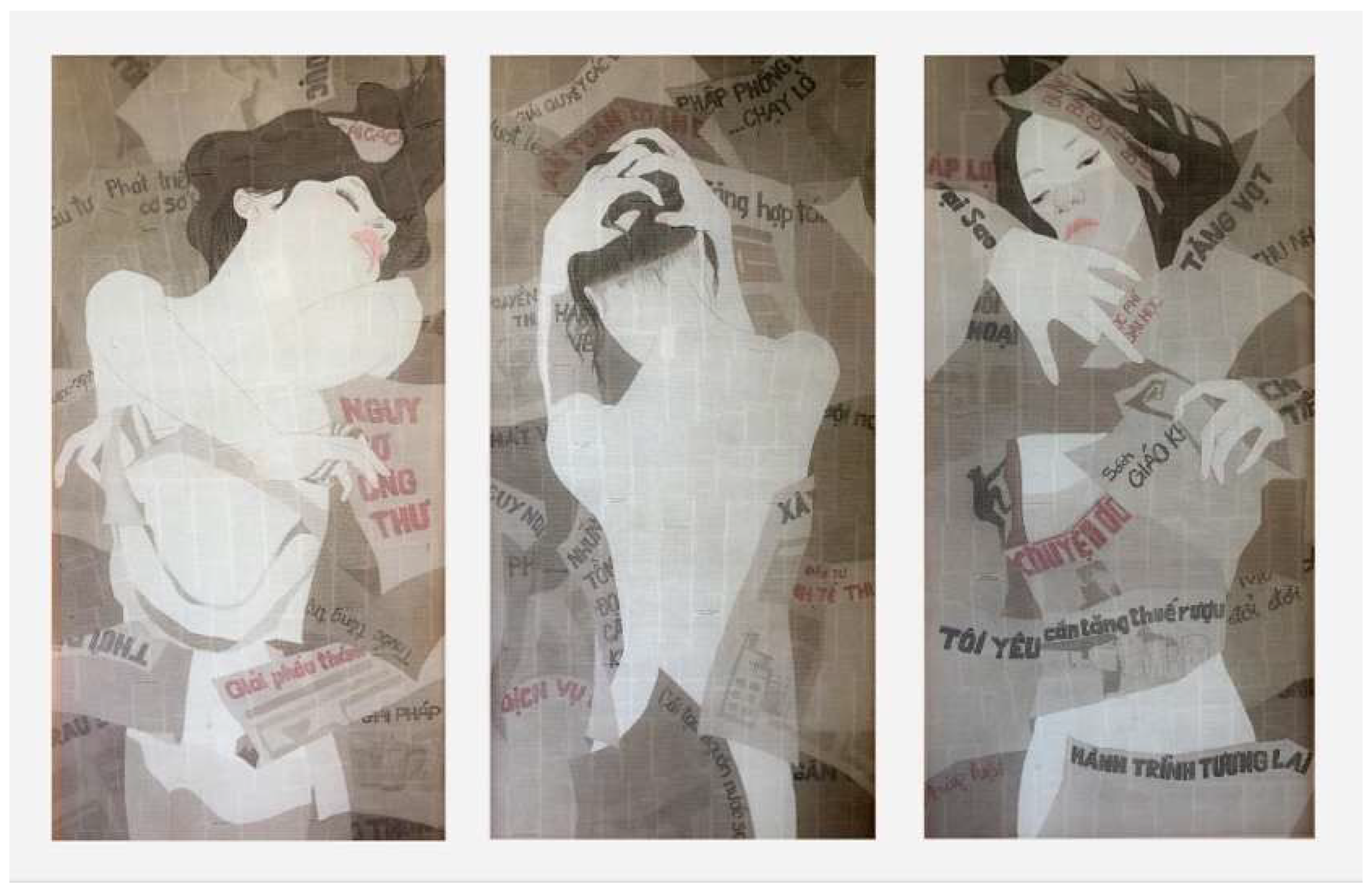
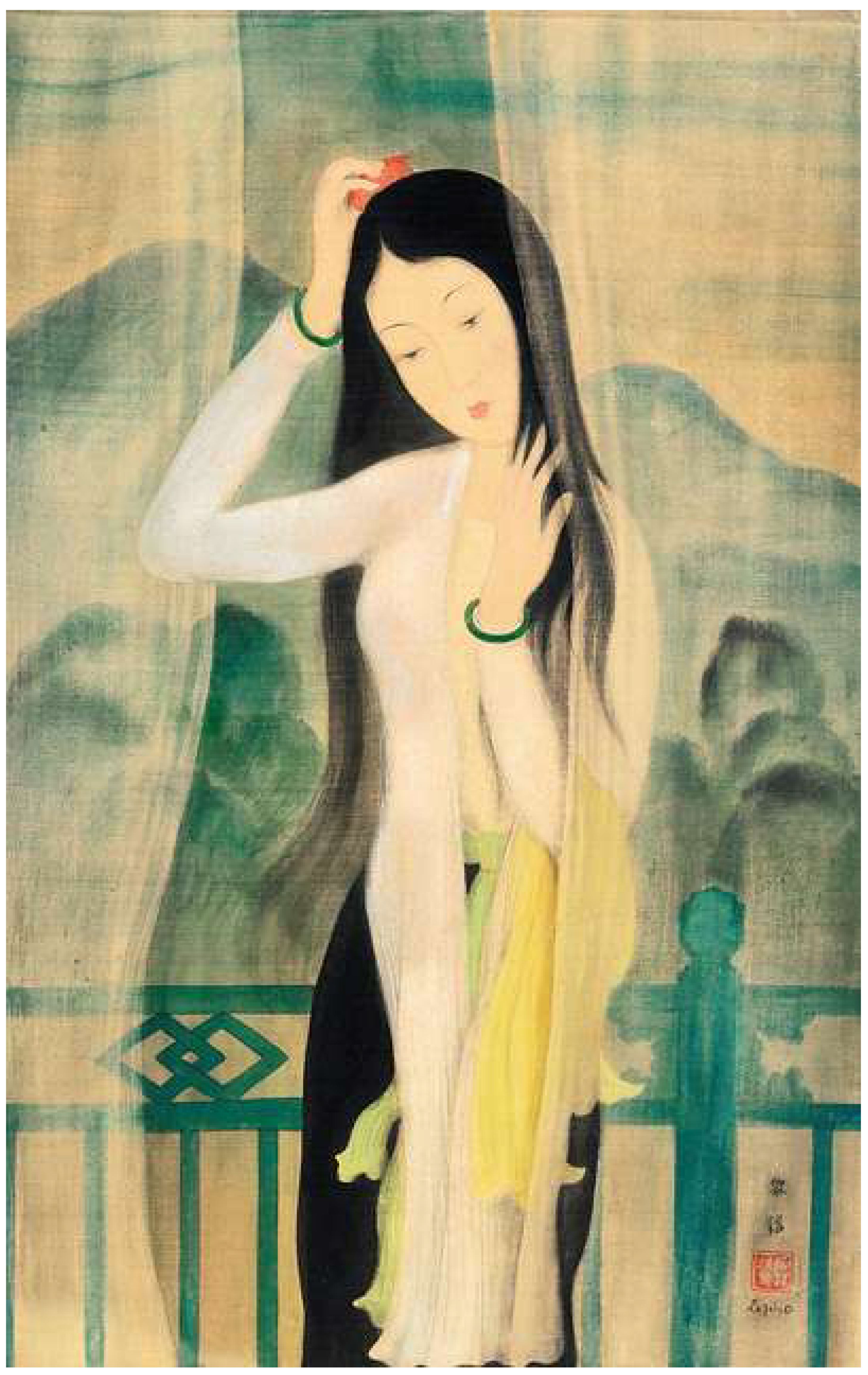


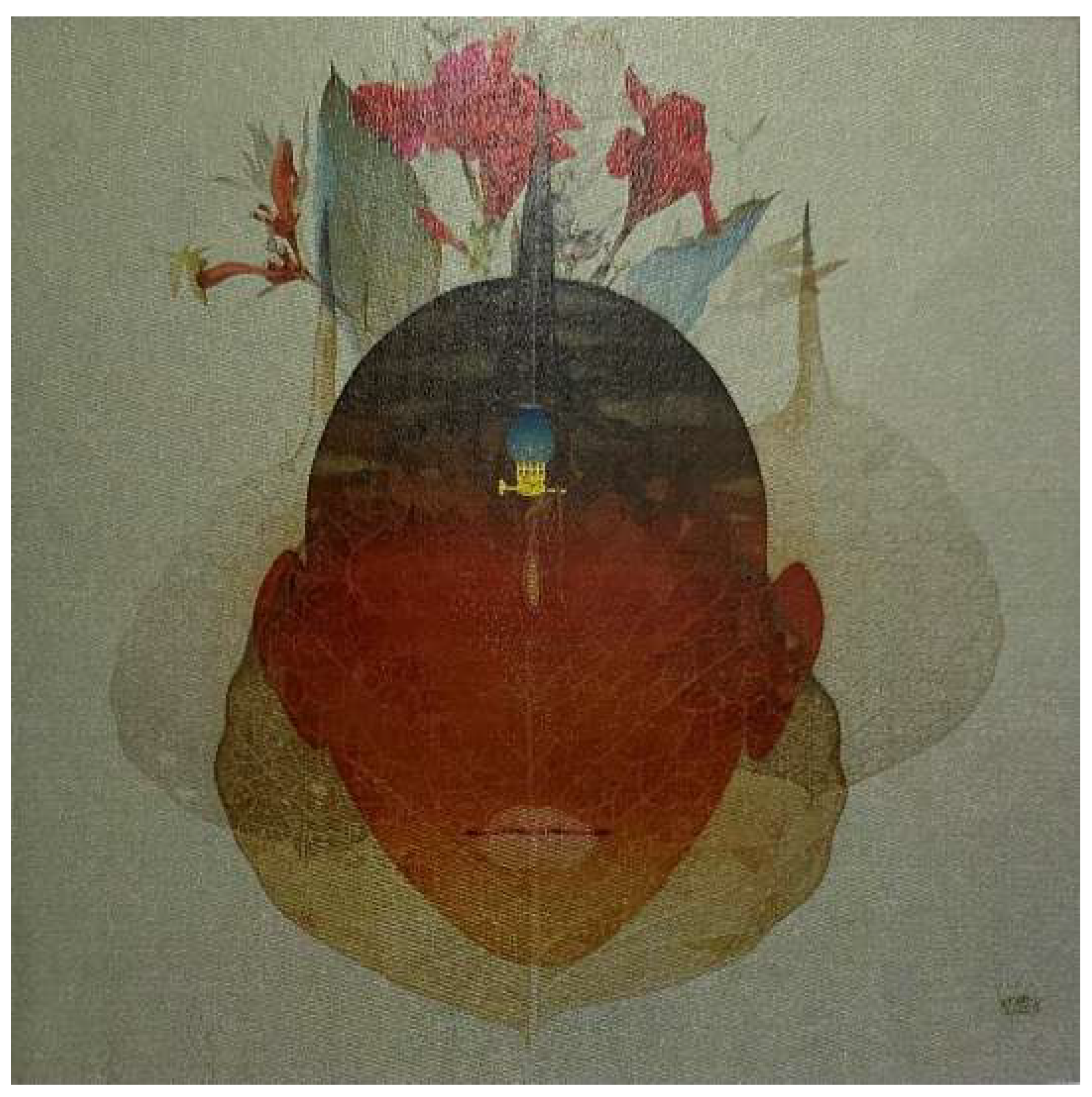
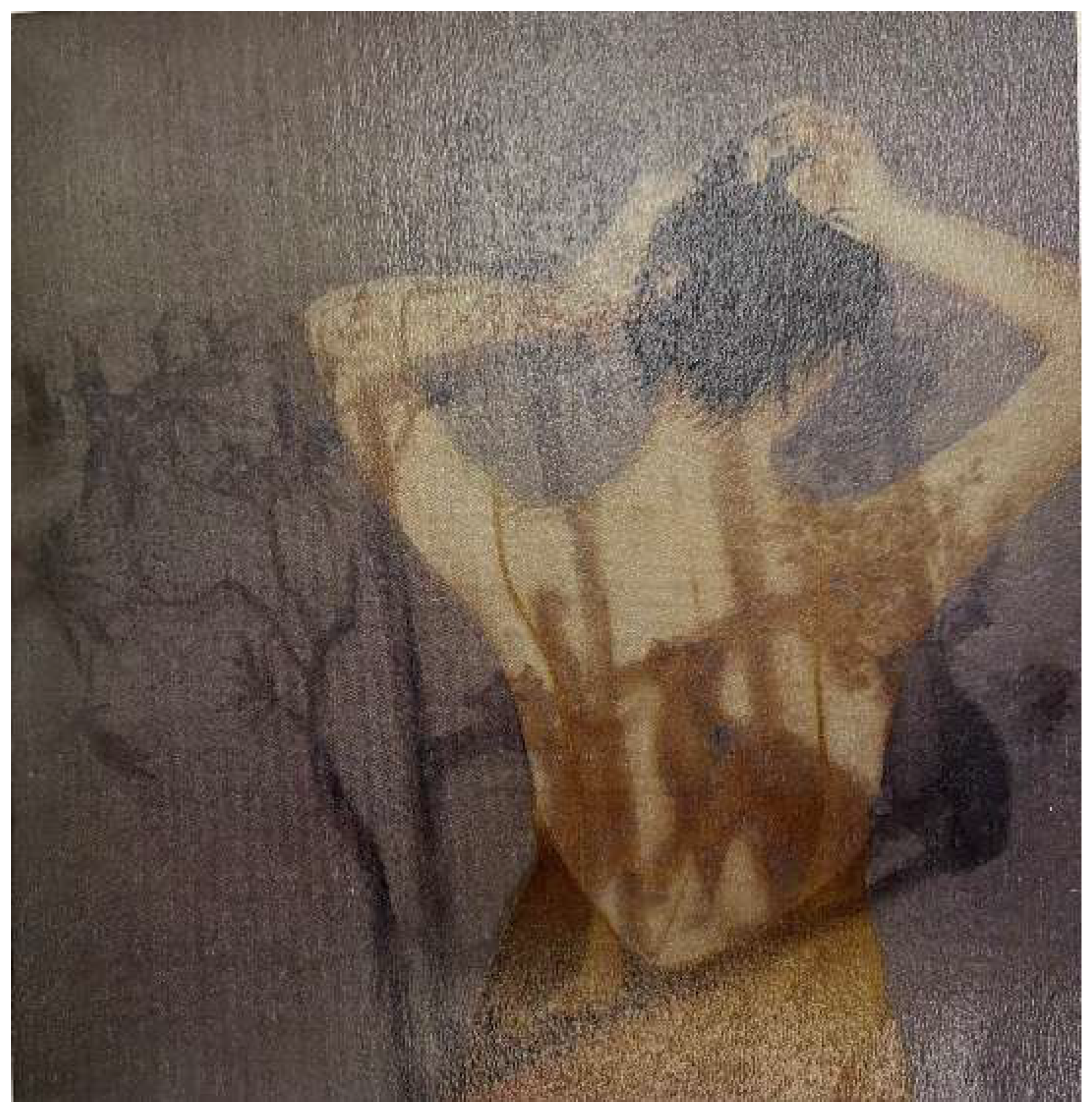
| Interviewee | Field/Role | Silk Painting Experience | Key Professional Activities |
|---|---|---|---|
| Tran Ngoc Minh | Art Educator | Practicing & researching since 1992 | National exhibitions; guest lectures on silk painting techniques |
| Ho Dang Quan | Art Critic | Researching since 2005 | Publishes critiques and essays in Vietnamese art journals |
| Truong Phuc Anh | Museum Curator | Researching archives since 2000 | Curated exhibitions on Nguyễn Phan Chánh and contemporary silk painters |
| Bui Van Quoc Trung | Contemporary Artist | Working with silk since 2005 | Exhibited internationally; combines silk with digital techniques |
| Do Vi Quang | Contemporary Artist | Practicing & researching since 2000 | Exhibitions and teaching in Vietnam and abroad |
| Phan Bich Thao | Art Historian | Studying silk painting since the 1990s | Publishes on colonial-era silk art and its cultural synthesis |
| Pham Dinh An | Exhibition Organizer | Working with silk exhibitions since 2010 | Organizes biennales and thematic exhibitions |
| Doan Nguyen Thach | Art Historian | Researching Vietnamese silk painting since early 2000s | Writes for international journals on national identity and global exchanges |
| Hoang Phuong Huy | Contemporary Silk Painter | Creating since 2018 | Participates in young artists’ exhibitions and gallery shows |
| Ngoc Minh Hoan | Art Educator | Practicing & researching since 2000 | Exhibitions and teaching of Vietnamese silk painting |
Disclaimer/Publisher’s Note: The statements, opinions and data contained in all publications are solely those of the individual author(s) and contributor(s) and not of MDPI and/or the editor(s). MDPI and/or the editor(s) disclaim responsibility for any injury to people or property resulting from any ideas, methods, instructions or products referred to in the content. |
© 2025 by the author. Licensee MDPI, Basel, Switzerland. This article is an open access article distributed under the terms and conditions of the Creative Commons Attribution (CC BY) license (https://creativecommons.org/licenses/by/4.0/).
Share and Cite
Doan, N.M. Understanding the Evolution of the Image of Women in Vietnamese Silk Paintings. Arts 2025, 14, 142. https://doi.org/10.3390/arts14060142
Doan NM. Understanding the Evolution of the Image of Women in Vietnamese Silk Paintings. Arts. 2025; 14(6):142. https://doi.org/10.3390/arts14060142
Chicago/Turabian StyleDoan, Ngoc Minh. 2025. "Understanding the Evolution of the Image of Women in Vietnamese Silk Paintings" Arts 14, no. 6: 142. https://doi.org/10.3390/arts14060142
APA StyleDoan, N. M. (2025). Understanding the Evolution of the Image of Women in Vietnamese Silk Paintings. Arts, 14(6), 142. https://doi.org/10.3390/arts14060142





